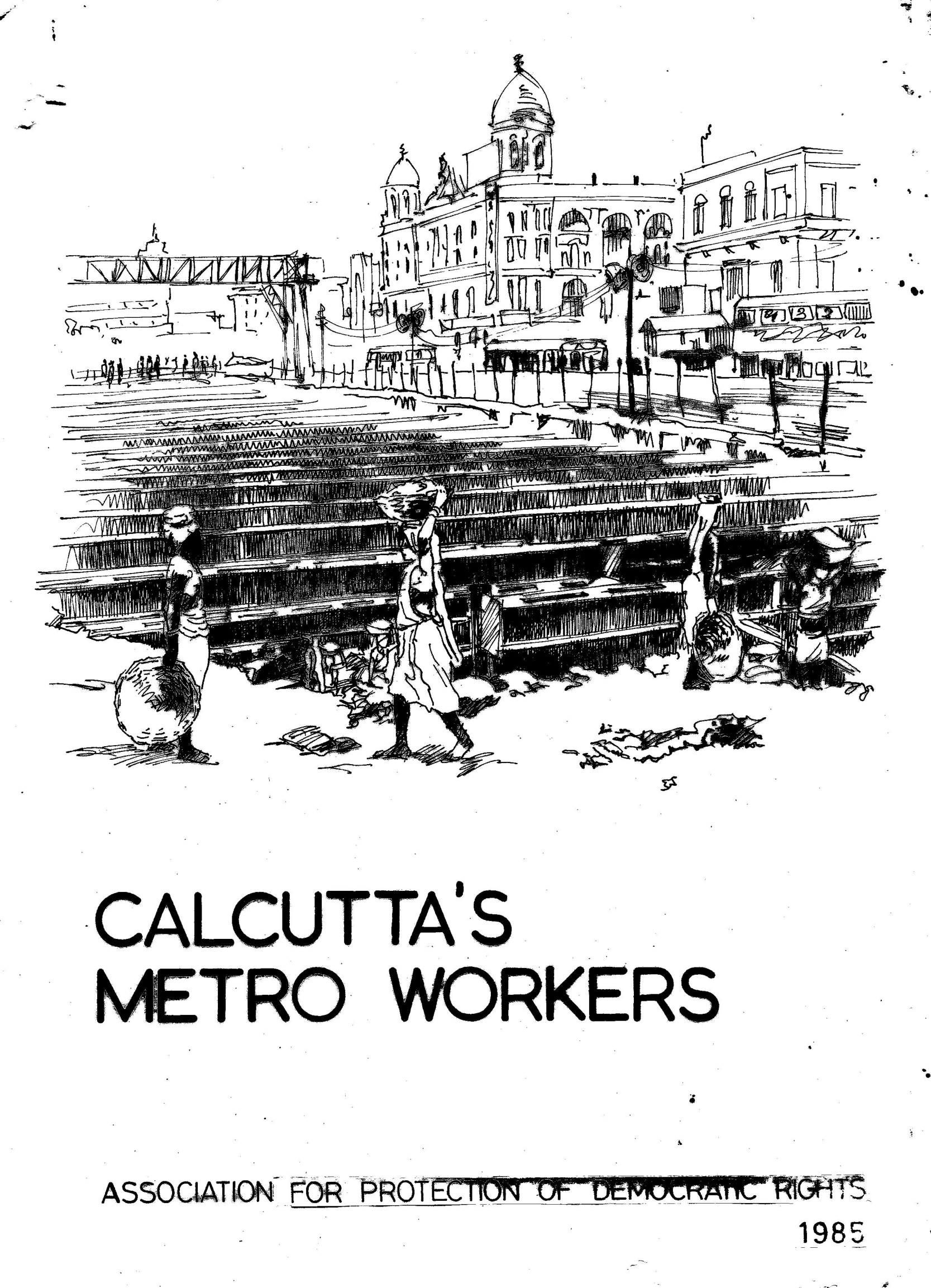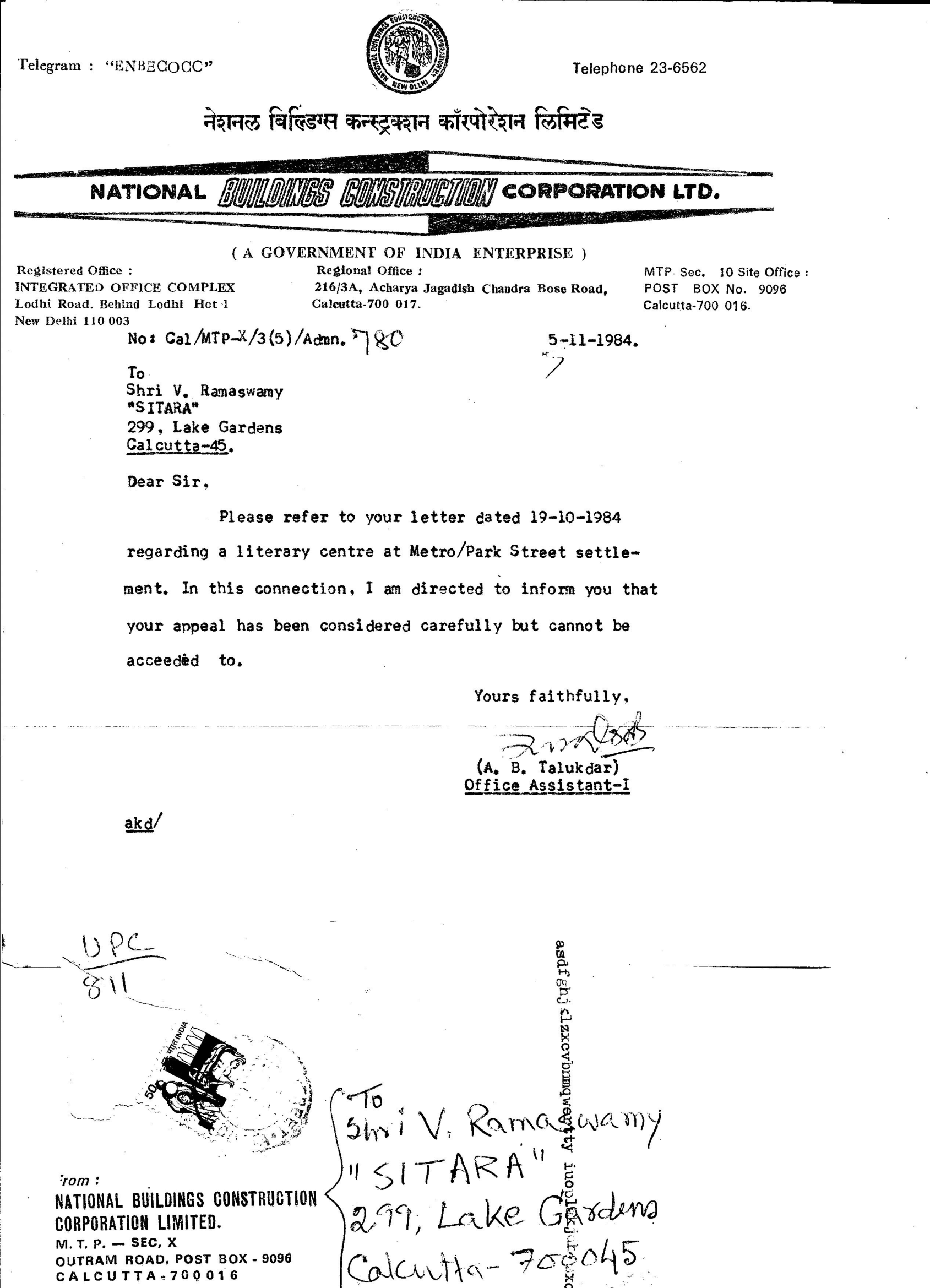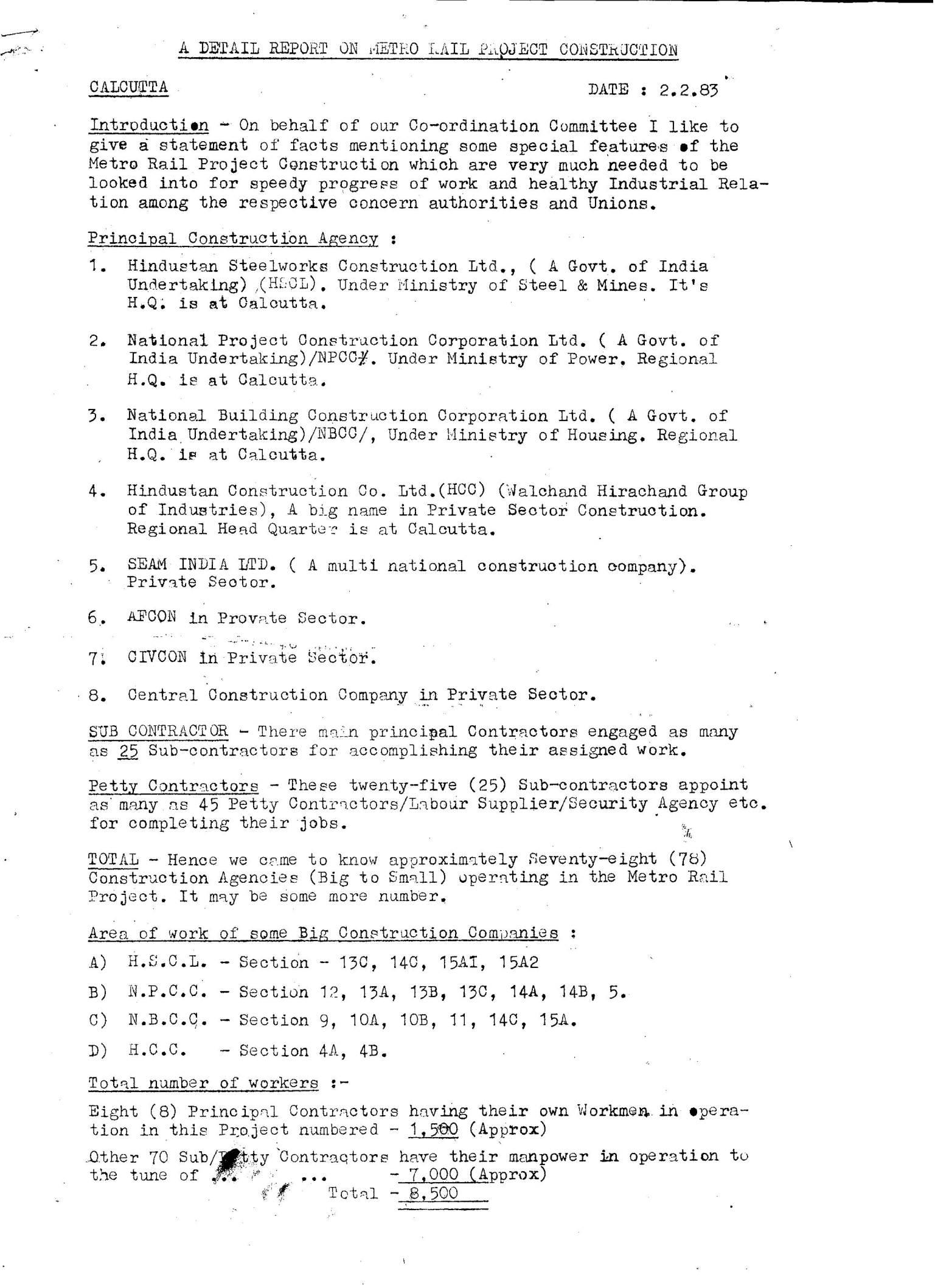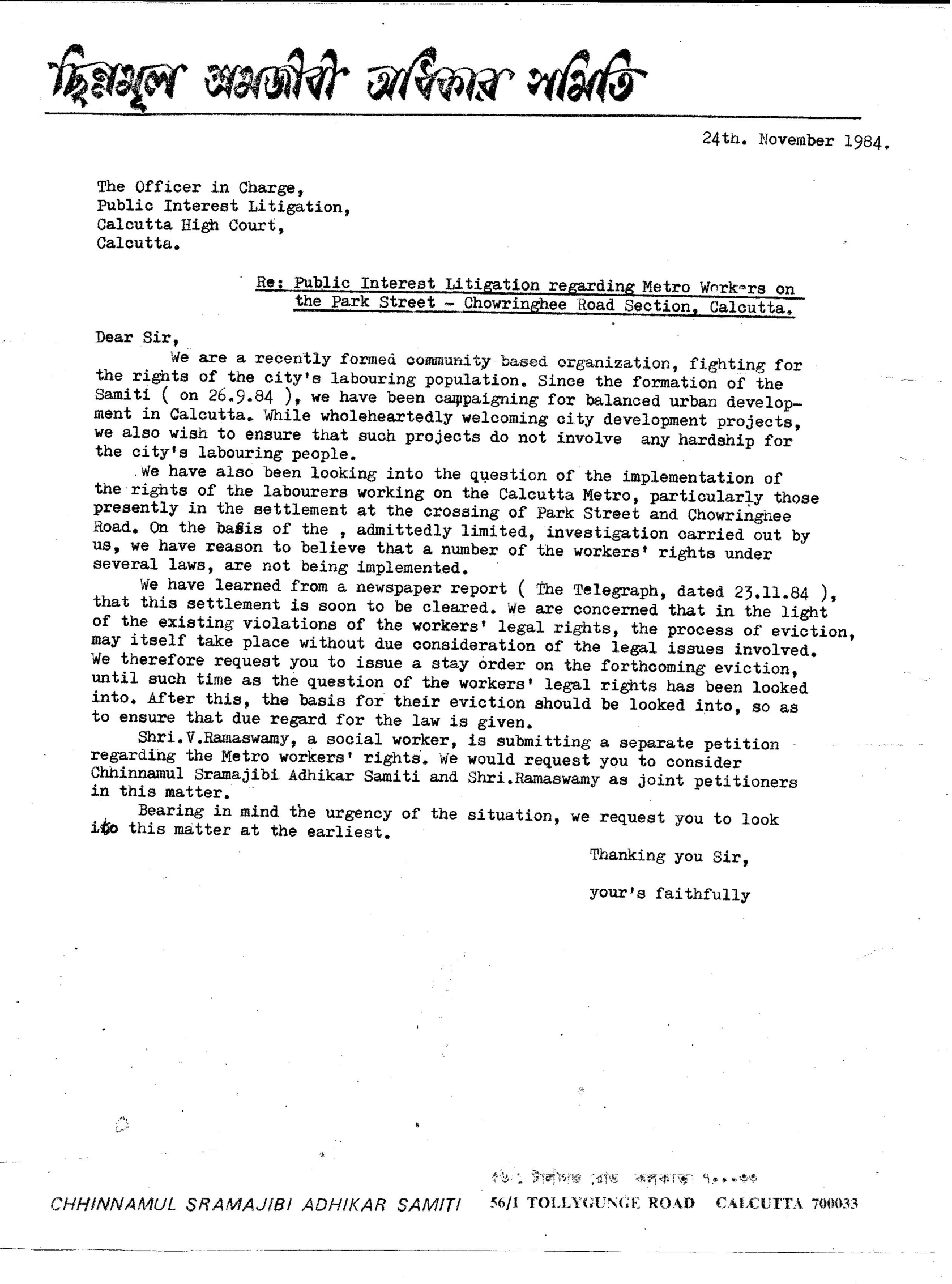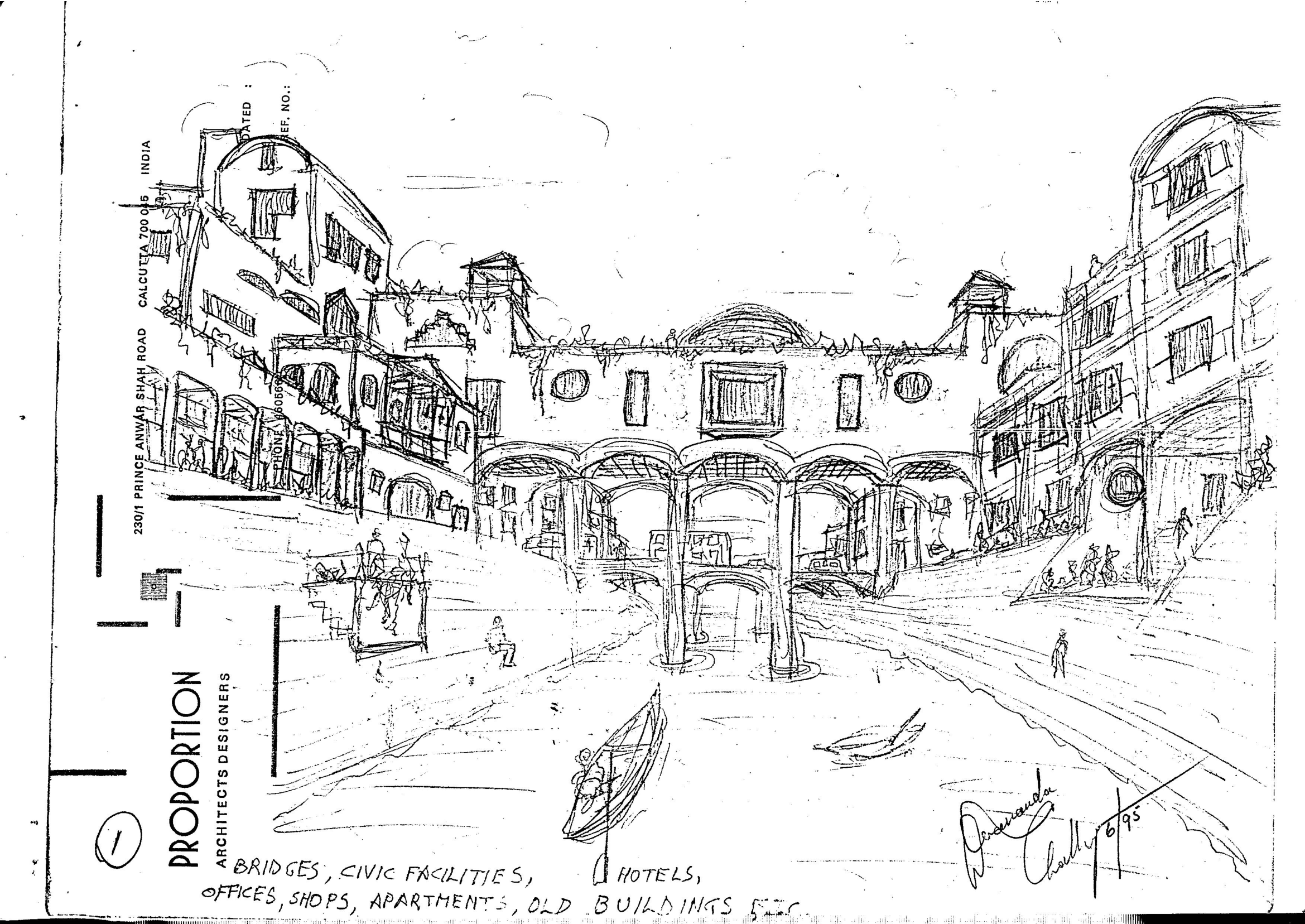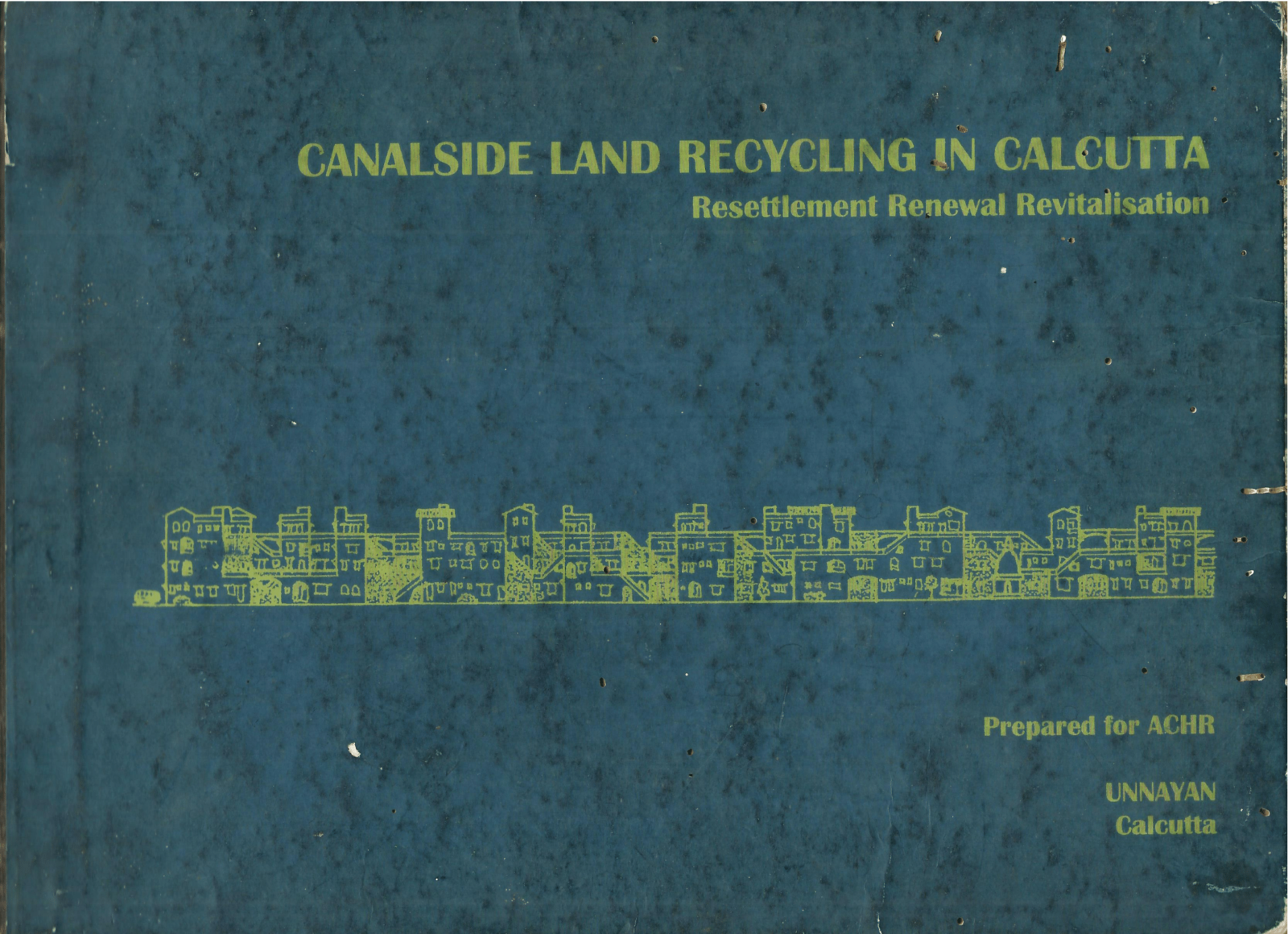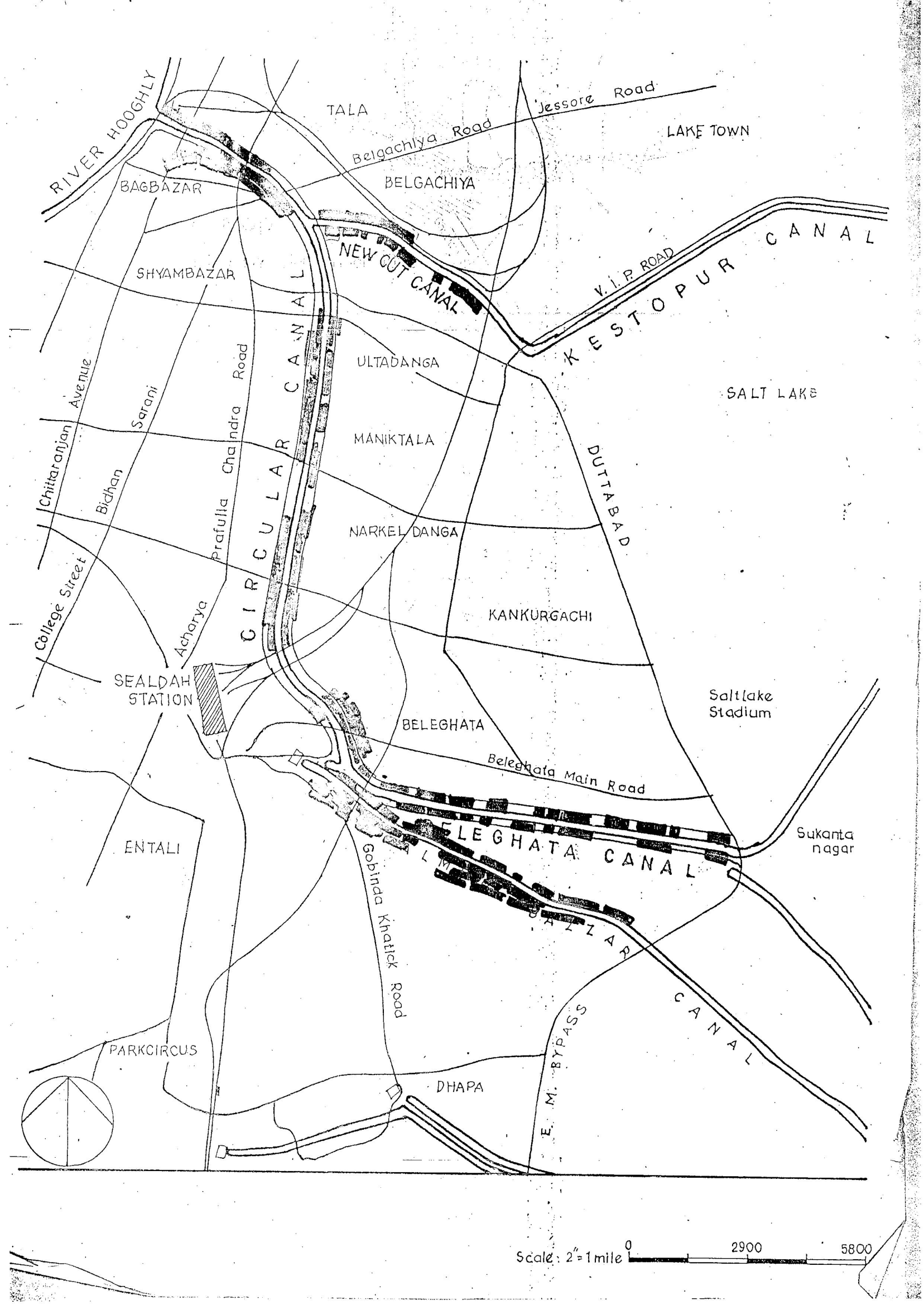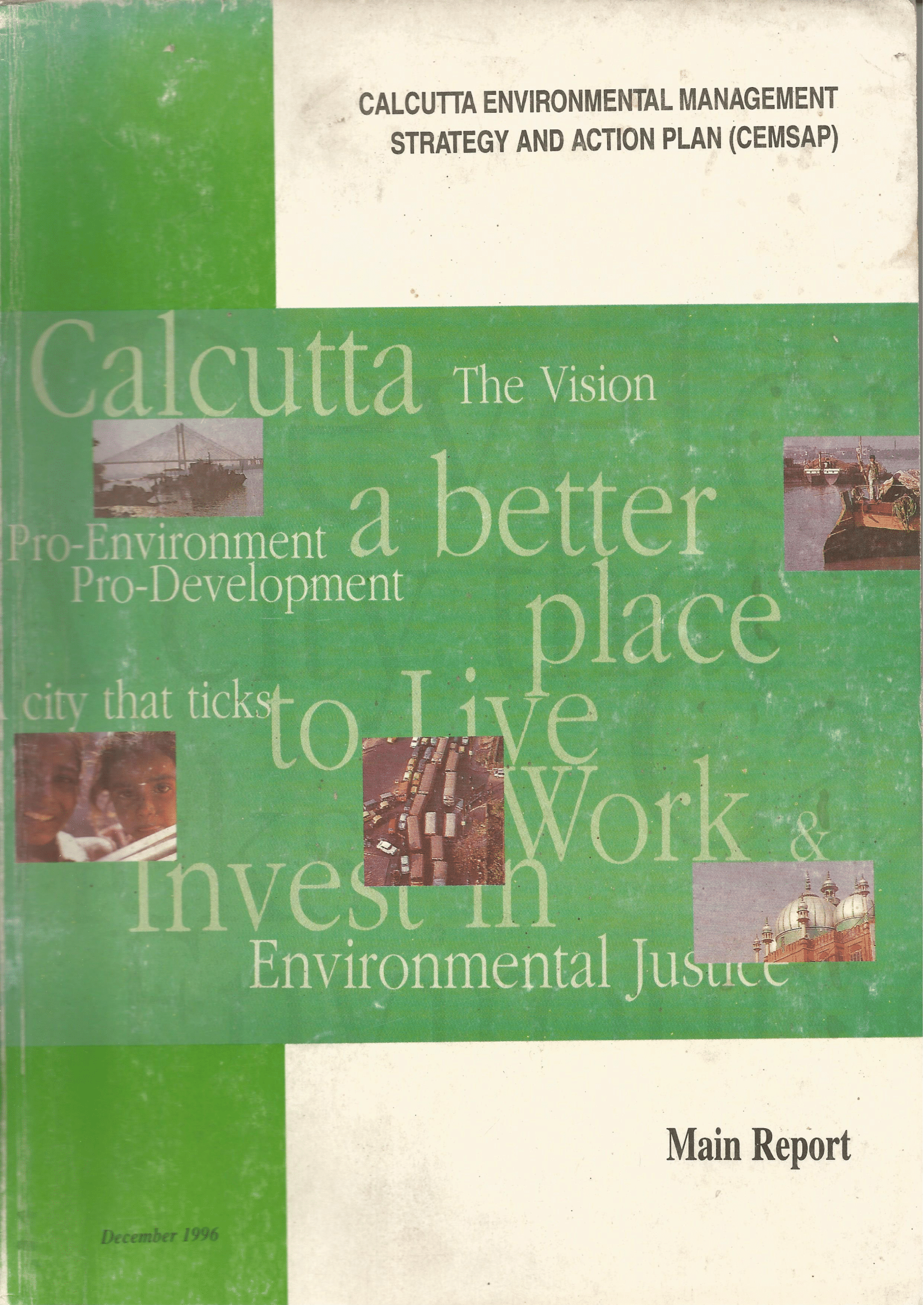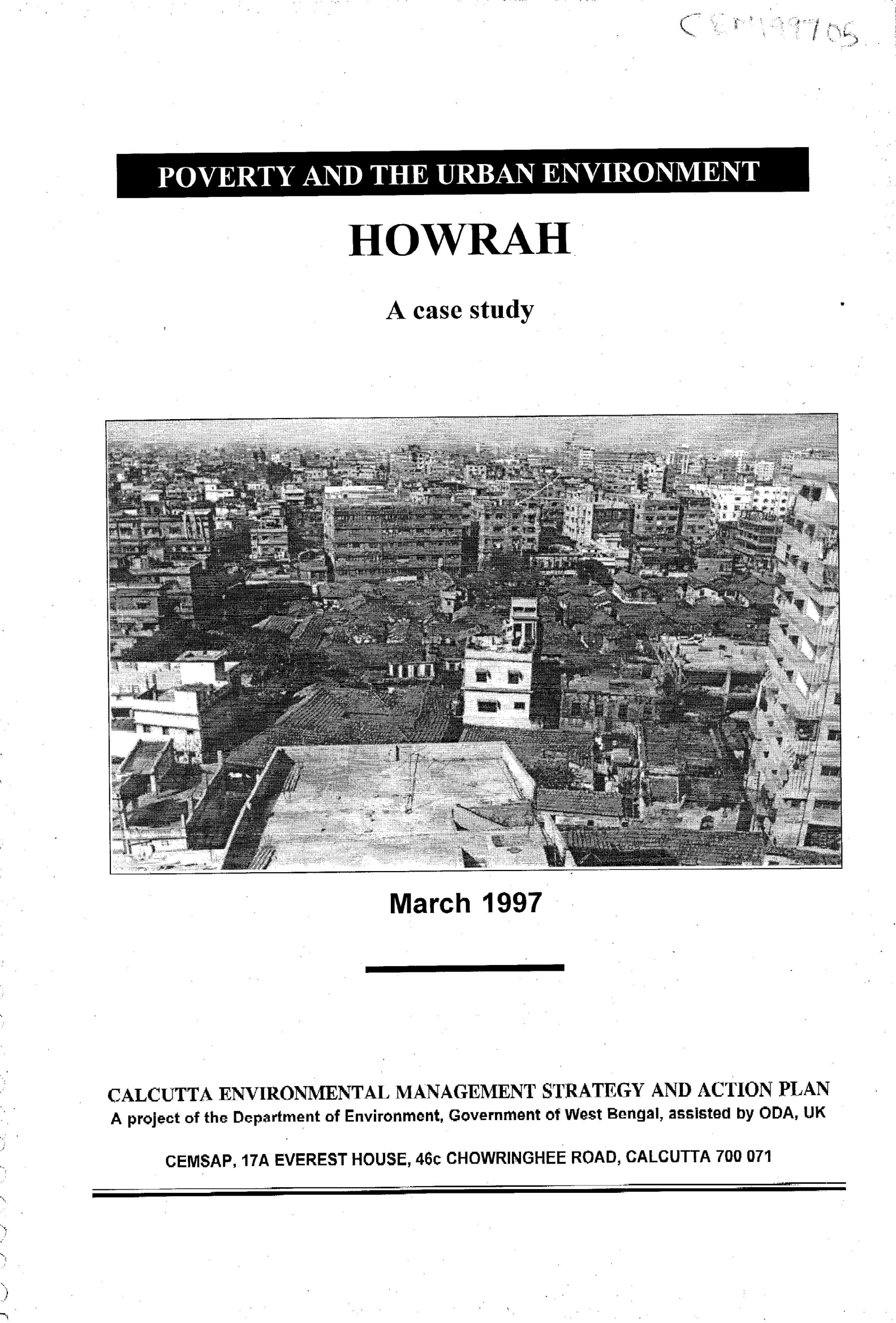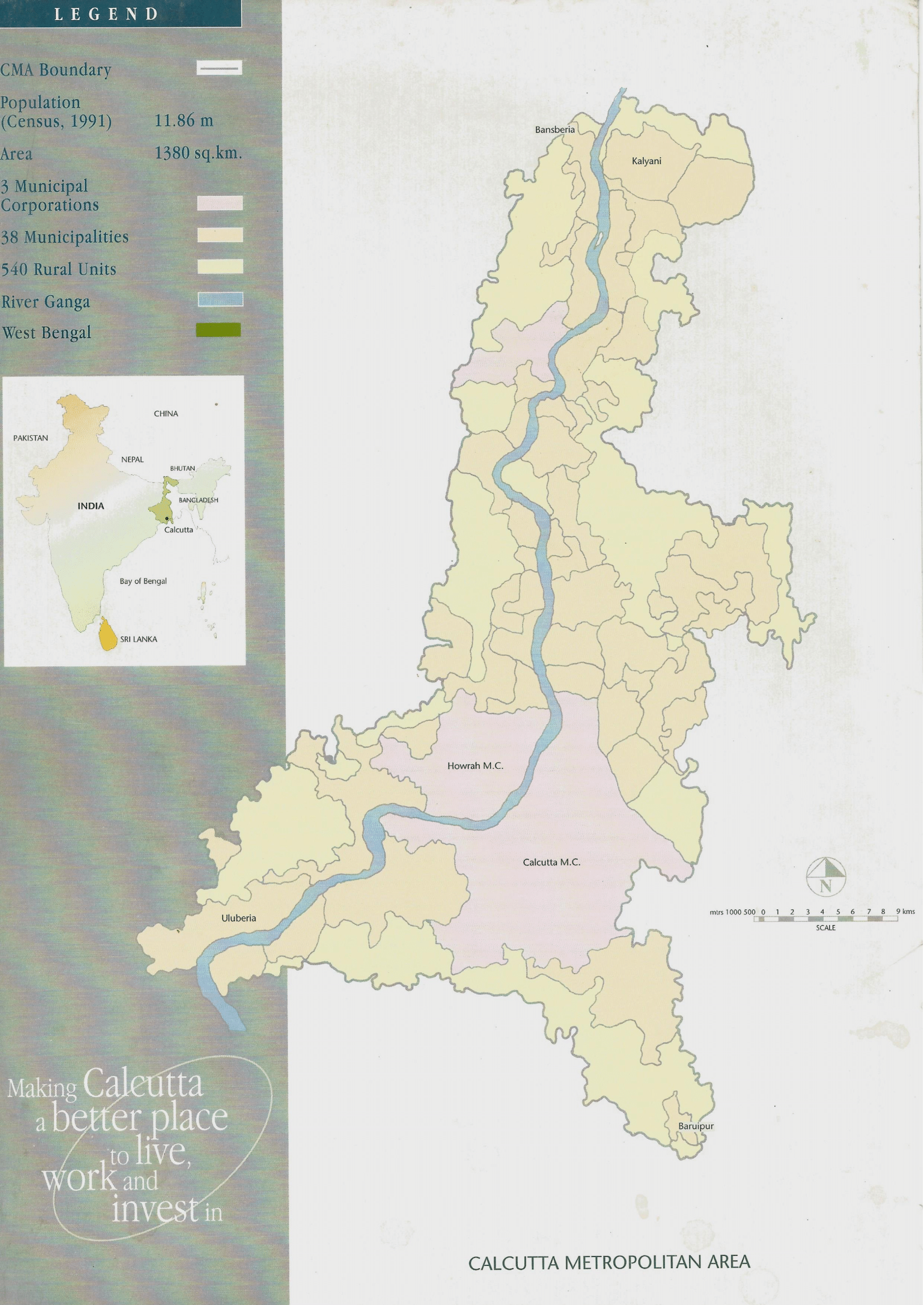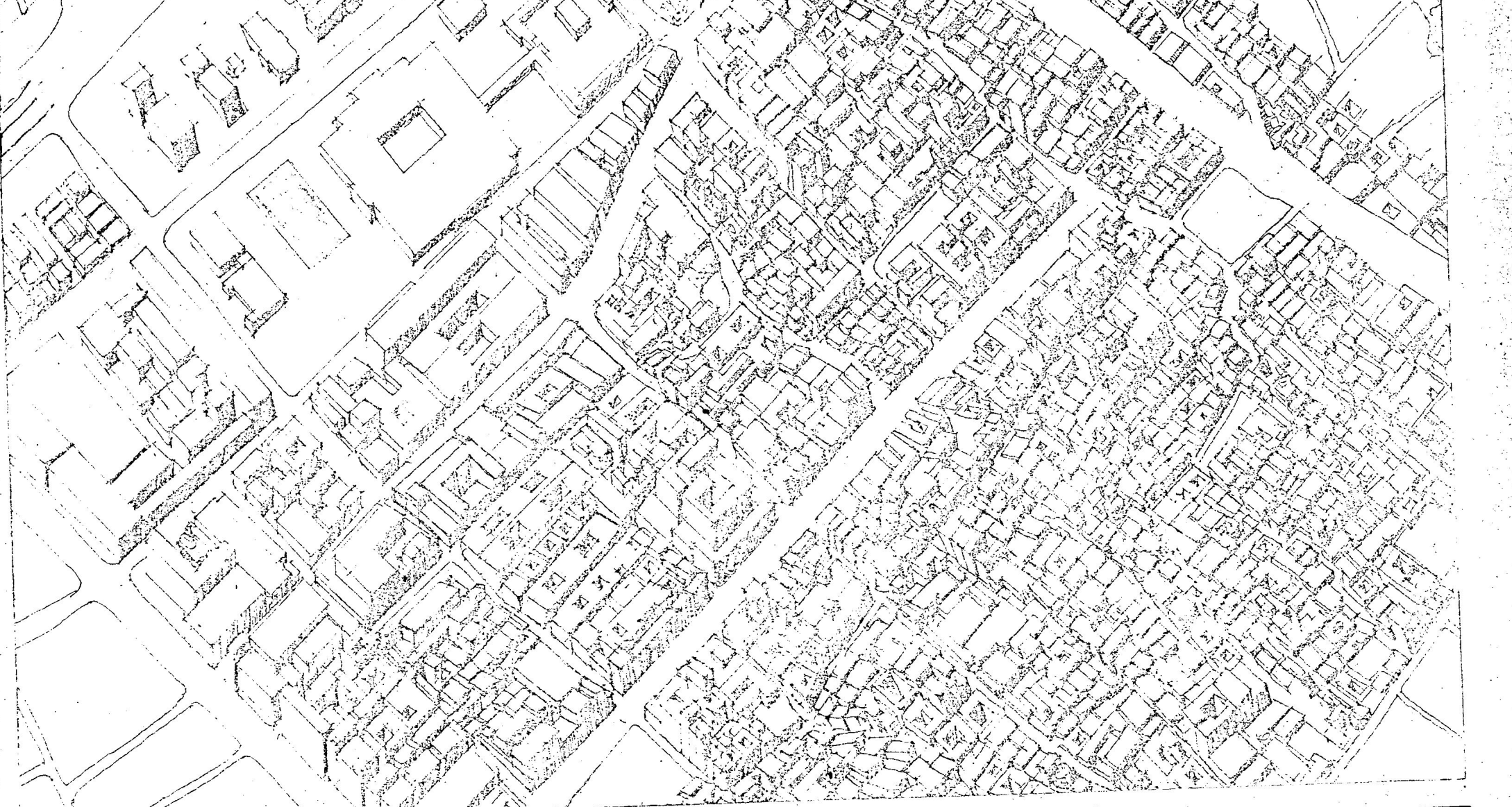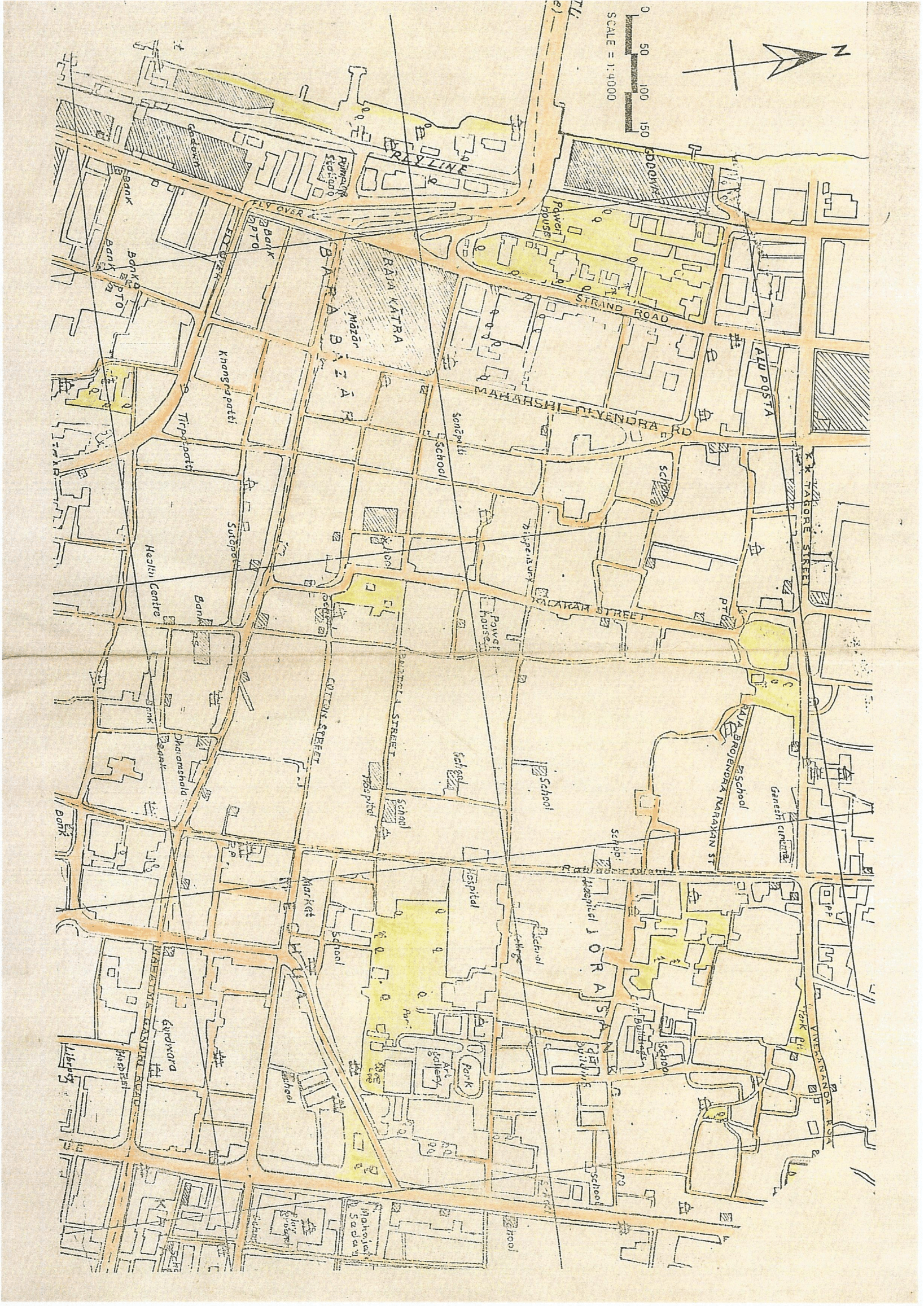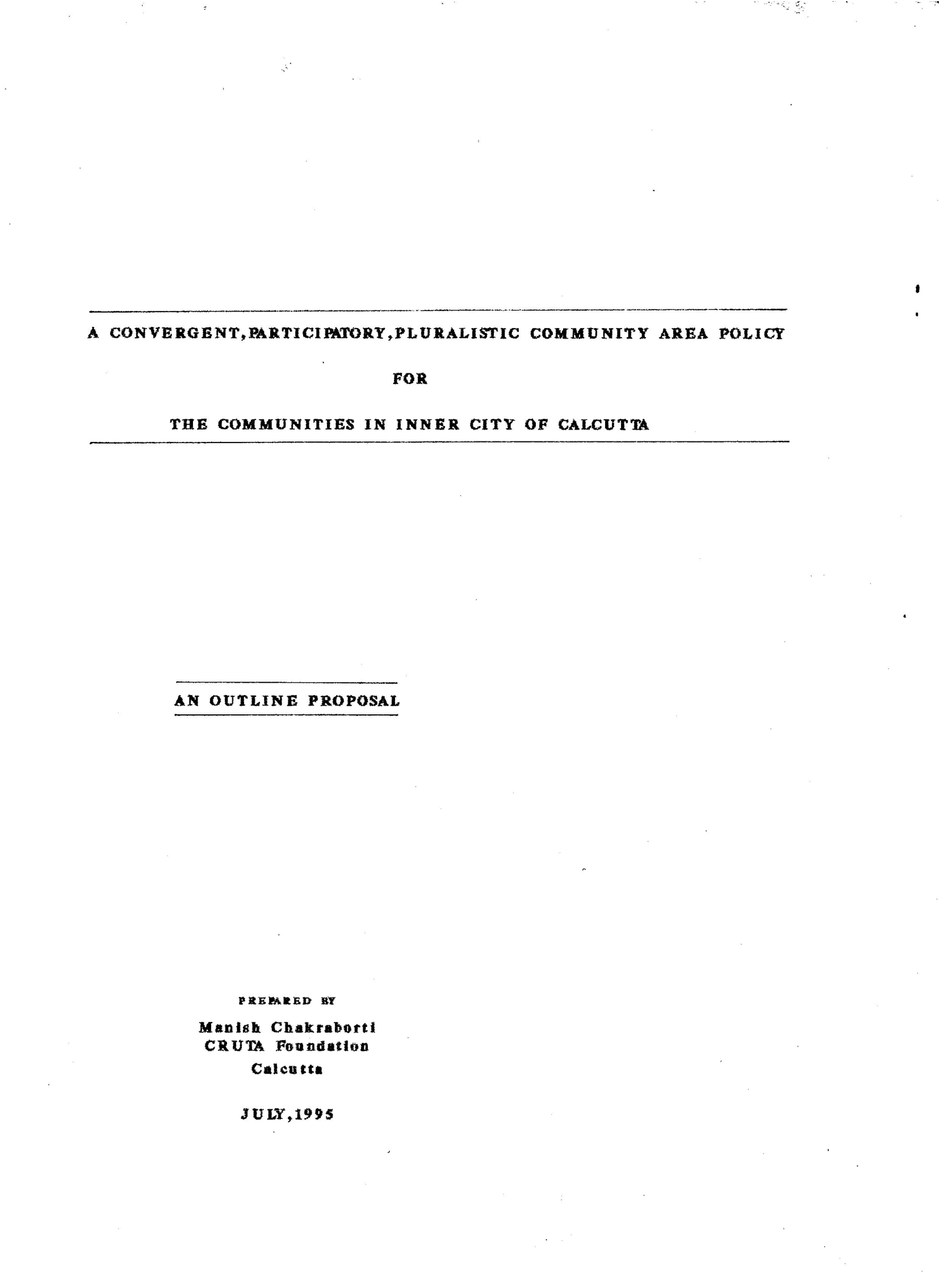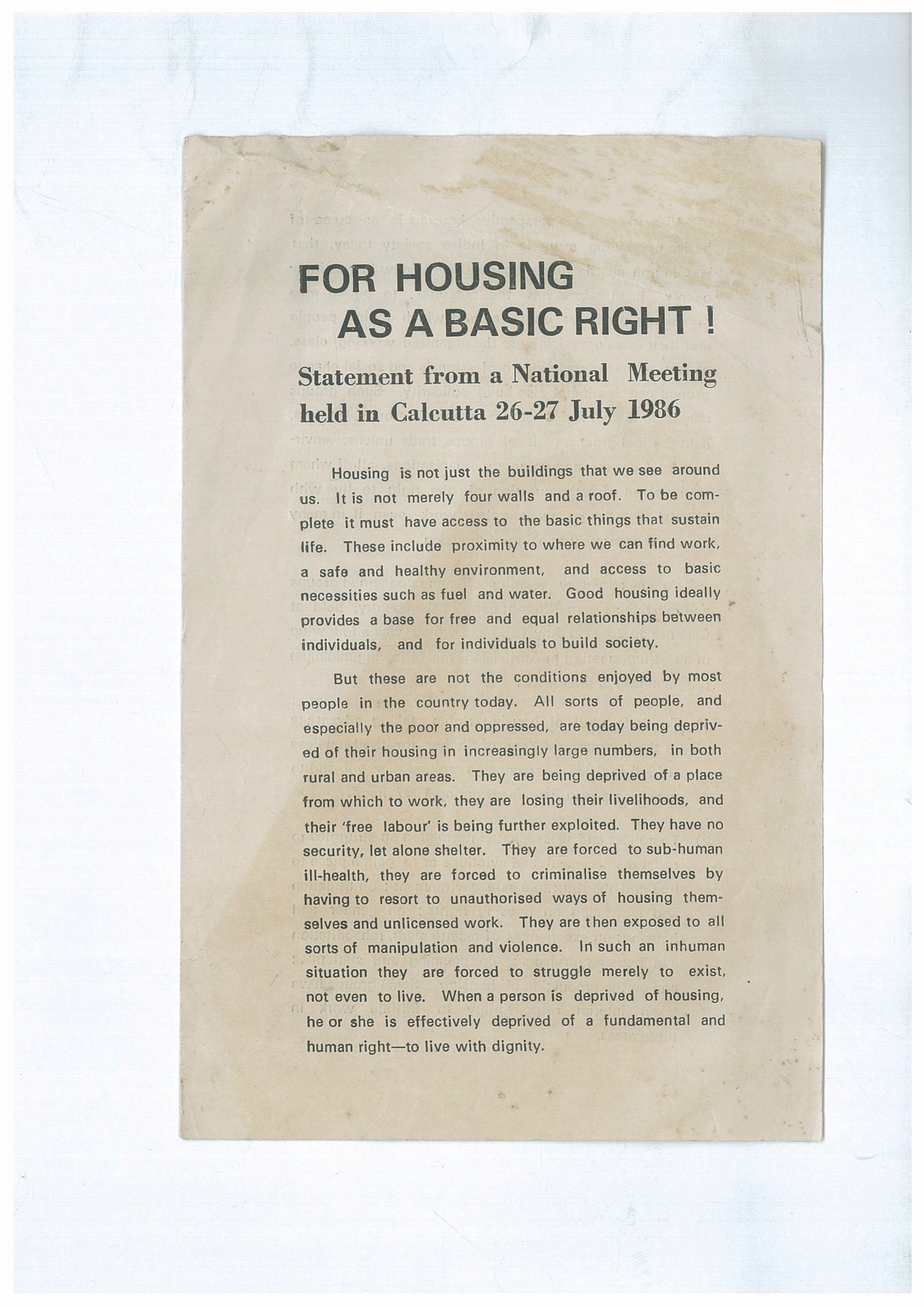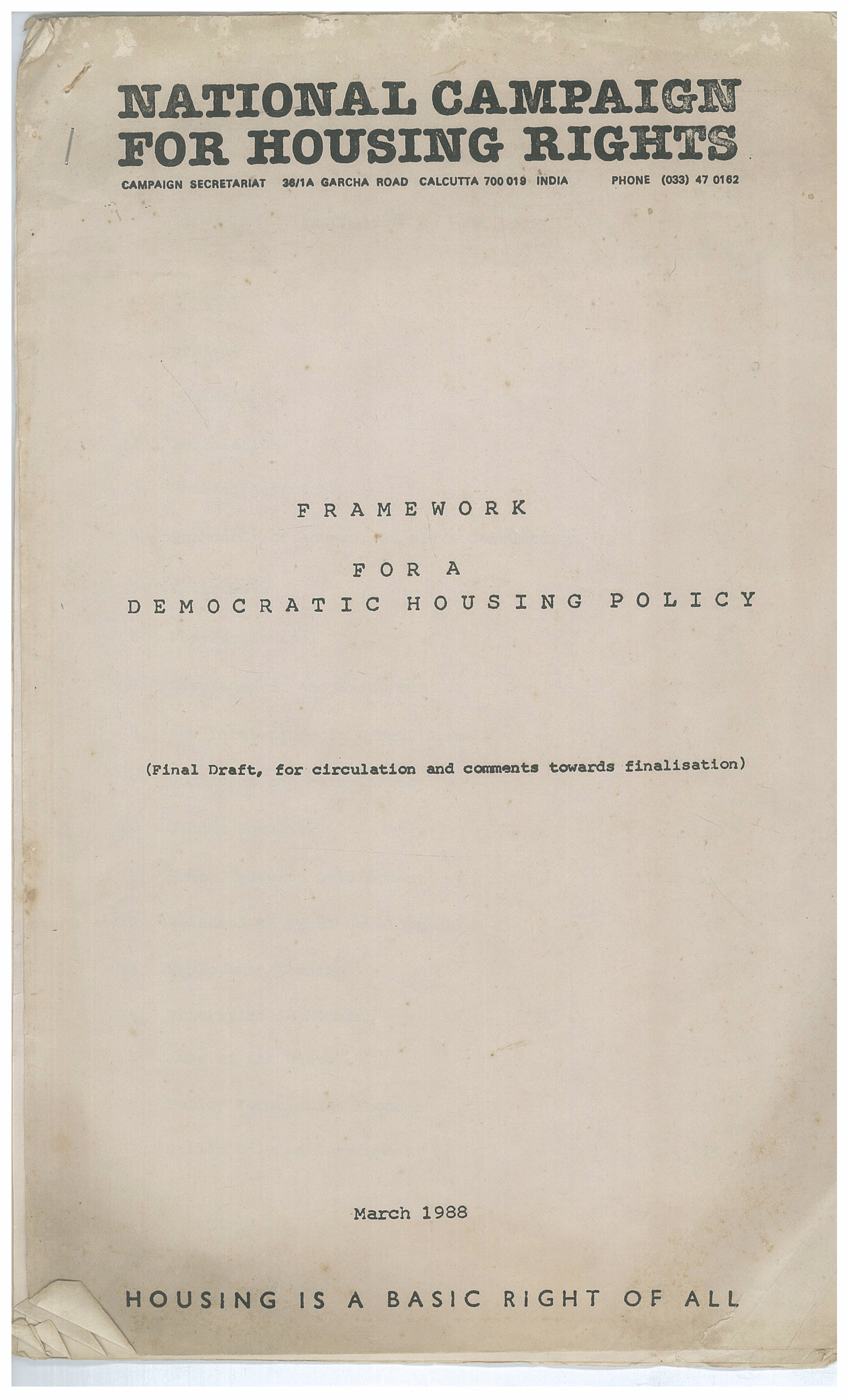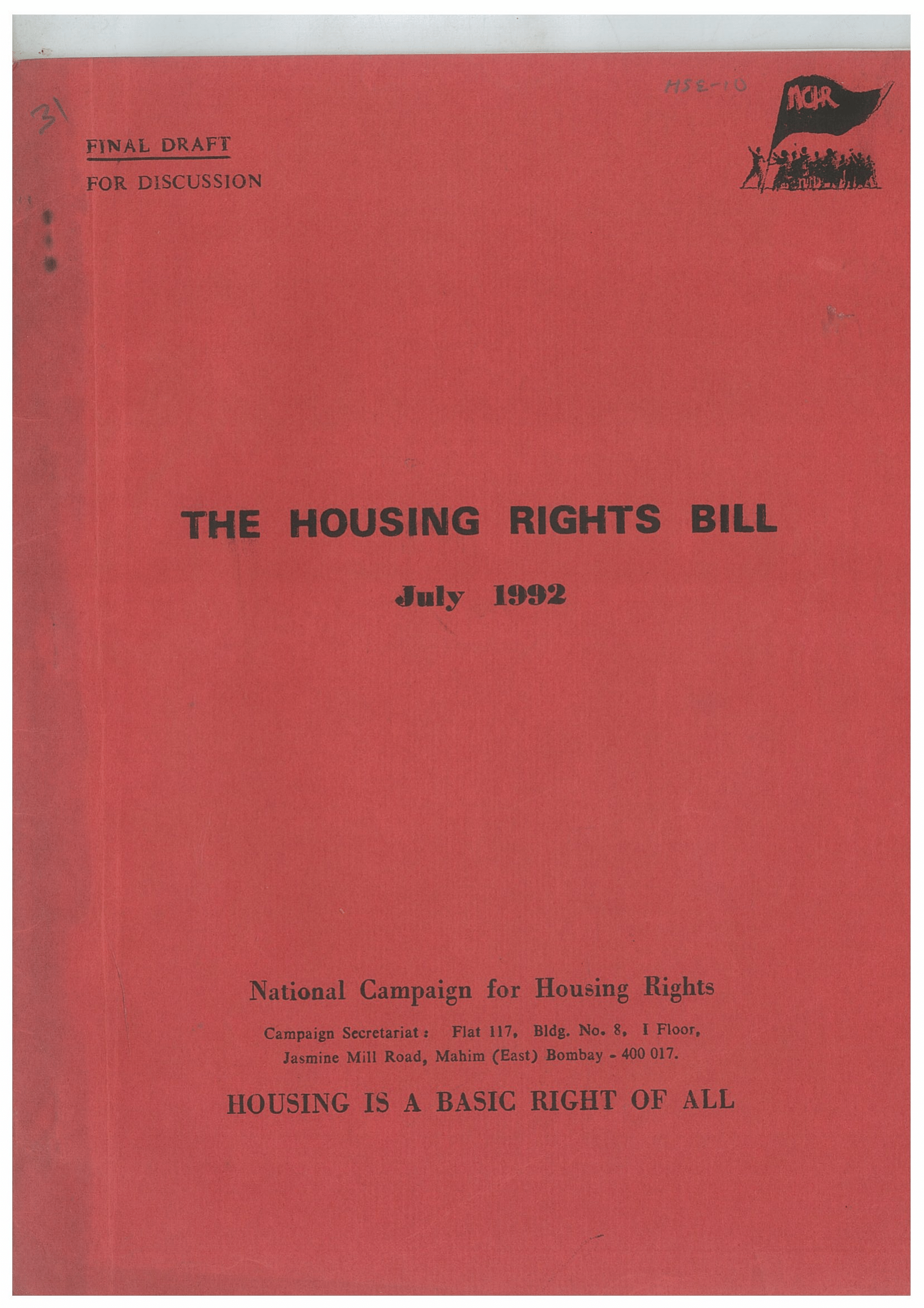Introduction
Author: S Bharat
Institution: Hyderabad Urban Lab
S. Bharat has worked on building up a public archive on civil society action and developmental initiatives in Calcutta/Kolkata from the work and private collection of the urbanist V. Ramaswamy and women’s rights campaigner Krishna Roy. Additionally, four important Unnayan publications were donated by Arun Deb, a former Unnayan employee.
How does civic action produce an understanding of the city at particular points in time? How can archival practices excavate and activate these submerged knowledges? These are questions that I have engaged with over the course of ten months archiving the papers of V. Ramaswamy and Krishna Roy.
Covering a roughly 25 year period from the 1980s to the mid-2000s, the papers offer a close-grained look into the everyday dynamics of grassroots civic action, urban movements, planning and policy initiatives and developmental activity in Calcutta, shedding light on diverse matters, such as the emergence of housing rights as a major area of civic intervention and contestation in urban India, the autonomous women’s movement in Bengal, popular mobilisation to tackle displacement and ecological degradation, participatory planning and urban renewal initiatives by the state and civil society, and the emergence of the non-governmental development sector in the country.
The archive houses these narratives in a multiplicity of forms: letters, memos, reports, field notes, checklists, parliamentary bills and legal documents, newspaper clippings and articles, concept notes, press releases, circulars, reading lists, bibliographies and much more. Alongside this, an audio archive of interviews with V. Ramaswamy, Krishna Roy and other key individuals brings context to the documents and offers pathways to navigate them while also functioning as an oral repository of its own.
A guiding principle of this archival process has been to allow for the archive to be read across multiple registers and for each document to be accessible from multiple directions – it can be read biographically as maps of a personal trajectories of engagement with the city, as the story of organisations and their networks, or even as an archive of events – rallies, seminars, workshops, of city-wide endeavours and national campaigns. Moreover, what defies the archive is as important as what the archive captures. Early on in the cataloguing process, it became evident that any set of documents permits many different kinds of taxonomies to be built around them, and the taxonomies will always remain messy, fuzzy at the margins, and provisional. The difficulty of pinning down certain documents, projects, personnel or events to one category and their resistance to being assigned singular, stable locations in the classificatory system of the archive is instructive of the very fluid nature of these developments. Enabling multiple archival taxonomies to coexist within the catalogue became a key methodological priority. The directory system of the catalogue divides papers according to the institutions and projects that produced them. Where papers from an organisation concern multiple projects, they have been divided along such lines. It goes without saying, however, that neither ‘projects’ nor ‘organisations’ are discrete, self-contained entities and lateral connections within and across these categories abound. The catalogue uses a fourfold system of tags to construct horizontal taxonomies that cut across the directory system. Tags used in the catalogue are broadly of four kinds:
Place tags designate the physical locations that the documents pertain to.
Theme tags describe the different themes touched upon by the document.
Type tags designate document types based on the form of the document.
Source tags designate the projects, events, movements, actors, and institutions the document relates to. In other words, these tags indicate the context of the document’s production.
Together the directory structure and the tags allow for a great degree of flexibility in how documents are accessed, interpreted and contextualised in series within the larger corpus of the archive.
Collections
Calcutta’s Metro Workers Report
The following papers pertain to the Calcutta's Metro Workers, a report written by V. Ramaswamy and Sandip Bandyopadhyay and published by the Association for the Protection of Democratic Rights (APDR) in April 1985. The report came out of the authors' engagement with squatter communities in Calcutta through the umbrella organisation Chinnamul Sramajibi Adhikar Samiti (CSAS). The demolition of a settlement of Metro construction workers near the Park Street-Chowringhee crossing prompted a study of working and living conditions of the workers all along the Metro route which culminated in this study. The collection includes, among other things, field notes from the study, newspaper cuttings, drafts of the report, and a copy of the Special Officers' Report commissioned by the Calcutta High Court following a public interest litigation filed by civil society activists following the publication of the report.
Canalside Study
The report Canalside Land Recycling in Calcutta: Resettlement Renewal Revitalisation grew out of a proposed investigation into unrecognised settlements in Calcutta and Bhubaneshwar, to be taken up by Unnayan on behalf of the Habitat International Coalition (HIC) and the Asian Coalition for Housing Rights (ACHR).
This programme was subsequently narrowed down to a proposal titled ‘Resettlement Through Renewal: An Action Plan for Housing Calcutta’s Unrecognised Dwellers’. This proposal marked a shift in Unnayan’s approach from its previous decade of engagement, as acknowledged by the proposal itself. From its focus on unrecognised settlements and evictions with an “agitational slant” to a more holistic engagement in the formulation of alternatives, involving “state and central governments, the private sector, and NGOs”. In other words, the report aimed to offer an alternative renewal and resettlement plan for the city of Calcutta, through collaborations between the government, the private sector, NGOs and the communities themselves. The study focused on unrecognised settlements by the canal-side, and envisioned a renewed Calcutta where the canals could became major, functional waterways.
The study was funded by the Asian Coalition for Housing Rights (ACHR). The study team comprised of Buddhadeb Ghosh, a former bureaucrat with the CMDA and the Panchayat Department of the Government of West Bengal, M.S. Maitra, former Director-General of the CMDA, Ashim Das of Unnayan, and the architect Devananda Chatterjee. V. Ramaswamy, who was actively involved in the formulation of the original proposal, but had since left Unnayan and taken up a position at TARU, was involved as an external consultant. The project was begun in 1995 and the final report was published in May 1998.
CEMSAP
The Calcutta Environmental Management Strategy and Action Plan (CEMSAP) was a collaboration between the Official Development Assistance (ODA) of the United Kingdom and the Government of West Bengal. The goal of the project was to facilitate the creation of frameworks and systems for the environmental betterment of Metropolitan Calcutta. Starting in April 1995, the project was divided into two phases. The first phase involved the preparation of a Environmental Management Strategy and the second phase was to focus on the implementation of the EMS through a time-bound Action Plan.
V. Ramaswamy joined CEMSAP in 1995, first as part of the Economics team, and soon transitioned into the role of Coordinator for the Social Development team. In his time at CEMSAP he worked on drafting the Priorities and Options Report and the Community Environmental Management and Strategy Report, among other things.
In Phase II, CEMSAP had a Municipal Services Development and Improvement Action Plan, as part of which there was a Community Action Plan with a pilot project in Howrah, geared towards environmental improvements such as repairing drains, installing tubewells, and building toilets, all done through community participation. Being put in charge of that, V. Ramaswamy made contact with Priya Manna Basti in the Shibpur area of Howrah, sowing the seeds for the Howrah Pilot Project that he would subsequently setup.
This collection brings together many of the CEMSAP documents amongst V. Ramaswamy's papers - Final reports, Draft reports, notes and working documents, and correspondence. The documents span a time period from 1995-1997.
CRUTA Papers
The Foundation for Conservation and Research of Urban Traditional Architecture, (CRUTA Foundation) was founded by Debashis Nayak. V. Ramaswamy came into contact with CRUTA in 1993 and subsequently was commissioned by CRUTA to prepare a report on Barrabazar Renewal and Conservation, which came out in 1995. The collection brings together papers from the Barrabazar project and a few other CRUTA documents, such as a report on participatory urban heritage conservation in Burdwan.
National Campaign for Housing Rights
Unnayan's involvement in the National Campaign for Housing Rights (NCHR) grew out of its work with unrecognised settlements in Calcutta and its involvement with the squatters' rights platform Chinnamul Sramajibi Adhikar Samiti (CSAS) and marked Unnayan's foray into national-level advocacy work. The groundwork for the NCHR was laid over the course of 1985 and 1986. The campaign was formally constituted at a two-day meeting in Bombay on 31st August 1986. The NCHR brought together various voluntary organisations and civil society groups and researchers interested in tackling the question of housing.
The immediate impetus for the formation of NCHR was the Draft National Housing Policy put out by the Government of India, which was widely seen as representing the interests of builders and the real estate lobby than that of the urban poor it purported to help. The NCHR responded to this by drafting an alternate National Housing Policy from a "pro-people" perspective. The NCHR actively lobbied with Members of Parliament and other government representatives and officials to bring the low-income housing agenda to the forefront.
The NCHR is typical of the "federated" structures that voluntary organisations across the globe had begun to adopt during this time. The NCHR comprised of a National Campaign Committee, as well as several Regional Campaign Committees. The West Bengal Regional Campaign Committe (WBRCC) was anchored at Unnayan, Calcutta. Unnayan also served as the first Campaign Secretariat of the NCHR and the Campaign Clearinghouse, which was responsible for coordinating and disseminating NCHR materials such as its newsletter Housing Struggle.
The collection showcases papers from NCHR workshops, internal correspondence, and offers a close look at the overall process of drafting the NCHR's National Housing Policy.
